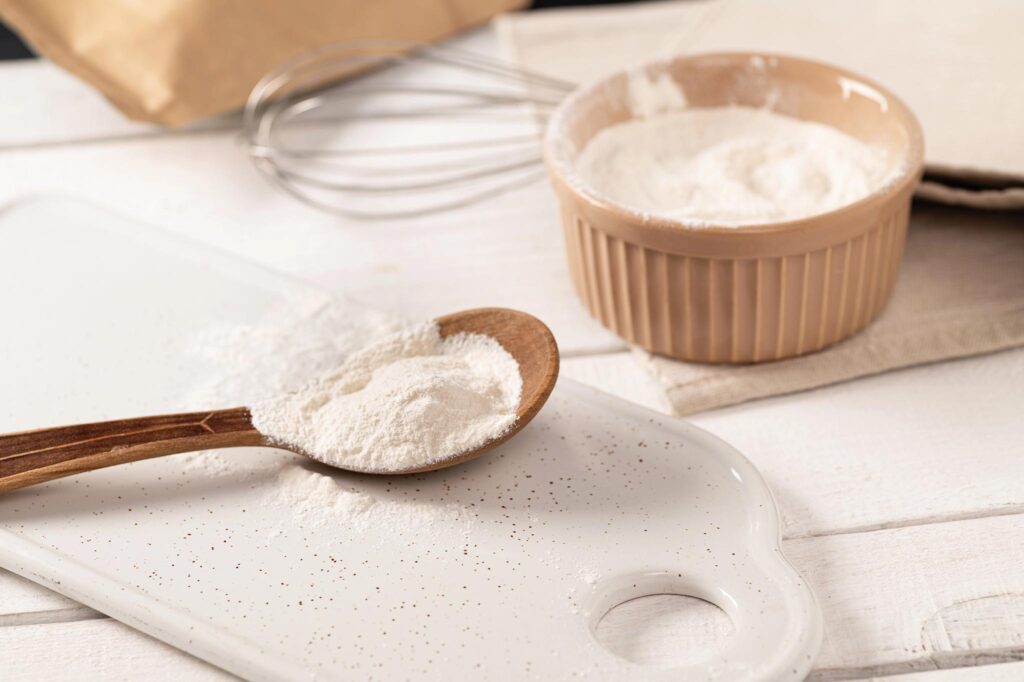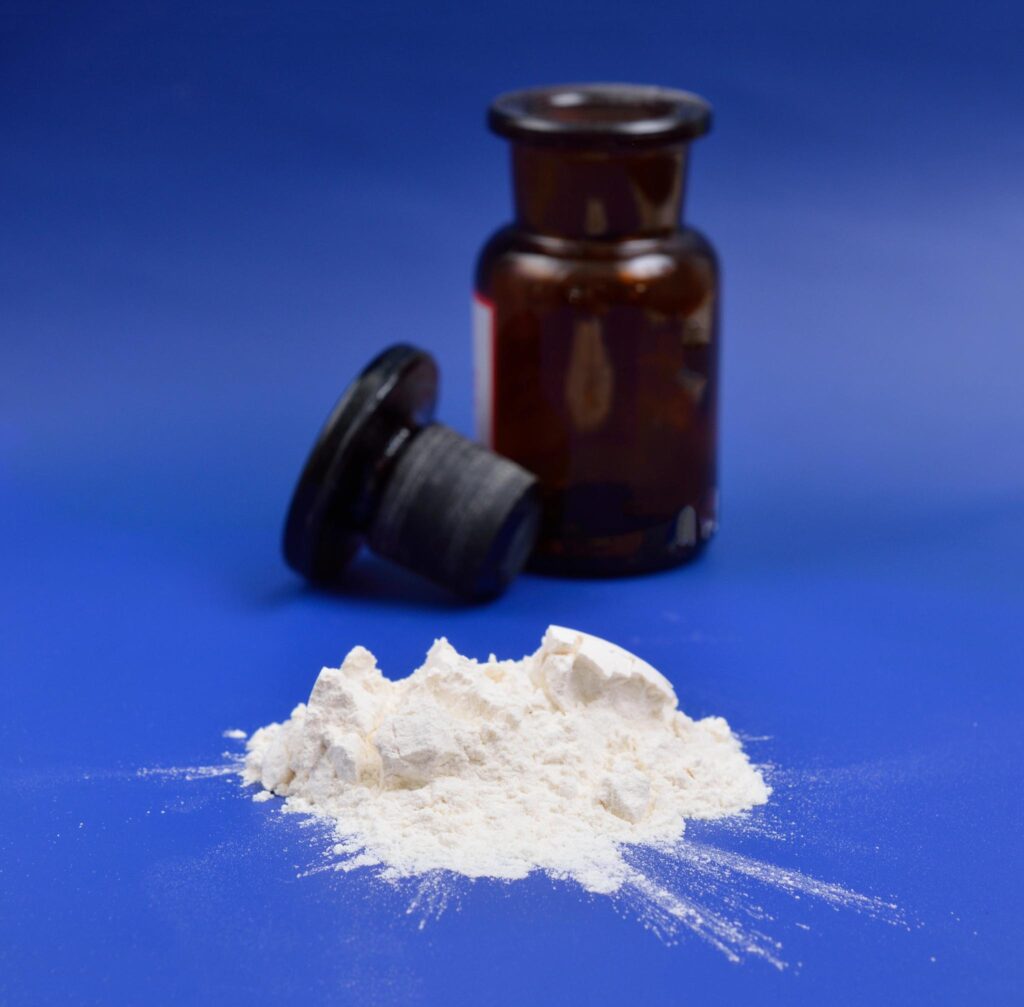What is Xanthan Gum?
Xanthan gum is a popular food additive and thickening agent found in many everyday products, from salad dressings to gluten-free baked goods. Derived from fermented sugars, it has gained attention for its versatility in both cooking and industrial applications. Whether you’re interested in its culinary uses, potential health benefits, or safety considerations, understanding xanthan gum can help you make informed choices. In this comprehensive guide, we’ll explore everything you need to know about xanthan gum, including how it’s made, its key functions, and the science behind its widespread use.

What is Xanthan Gum Made From and What Does it Do?
Xanthan gum is a food ingredient made through a simple fermentation process. A natural bacterium called Xanthomonas campestris is used to ferment sugars such as glucose, sucrose, or lactose. After fermentation, the material is dried and ground into a fine white powder — the xanthan gum you see in baking aisles and ingredient lists.
Despite the technical name, xanthan gum is considered safe and widely used in food, cosmetics, and even industrial applications. In cooking, it acts as a thickener, stabilizer, and emulsifier. This means it helps liquids become thicker, keeps ingredients from separating, and allows oil and water to blend smoothly. For example, it’s the reason salad dressings stay creamy instead of separating, and why gluten-free bread holds together rather than crumbling.
Beyond food, xanthan gum is added to products like toothpaste and lotion to give them a smooth texture and consistent feel. In manufacturing, it’s valued as a suspension agent that helps keep particles evenly distributed.
Key Highlights
- Xanthan gum is a popular thickening and stabilizing agent in both food and non-food products.
- It is especially vital in gluten-free baking, mimicking gluten’s texture and binding abilities.
- Produced through sugar fermentation, xanthan gum is safe and effective in small amounts.
- It may help regulate blood sugar and offers soluble fiber benefits, but excess intake can cause digestive discomfort.
- Alternatives like guar gum, psyllium, or chia are available for those with dietary sensitivities to xanthan gum.
What is Xanthan Gum and How Is It Made?
Xanthan gum is a popular food additive that’s widely used in the food industry for its unique ability to thicken and stabilize a variety of products. If you’ve ever tried products labeled gluten free or experimented with gluten free baking, you’ve likely encountered xanthan as a key ingredient. Derived through a fermentation process, xanthan gum is produced when the bacteria Xanthomonas campestris is added to a simple sugar source, like corn or wheat. The resulting substance is then dried and ground into a fine powder, giving us the food xanthan seen in ingredient lists for both commercial and homemade foods.
This gum xanthan powder is highly prized for its versatility. Because it creates viscosity and structure, xanthan has become a staple in gluten free recipes and products. When mixed with liquid, xanthan gum-based mixtures mimic the elasticity typically provided by gluten, helping to bind ingredients together and improve texture. That’s why many gluten free flours and recipes rely on this gum to achieve a pleasing, consistent result. Whether you’re making sauces, salad dressings, baked goods, or dairy alternatives, xanthan ensures the ingredients don’t separate, providing a smooth and cohesive texture across various foods.

Regarded as safe by organizations like Healthline and the FDA, xanthan gum is approved for use in numerous food products and recipes worldwide. It’s used in small amounts due to its effectiveness, ensuring that food maintains its structure and consistency without compromising flavor. Xanthan also extends shelf life and improves product stability, making it invaluable for manufacturers and home cooks alike who want their foods to look and taste great.
Common Uses of Xanthan Gum in Food and Beyond
Xanthan gum has established itself as a must-have ingredient in both commercial and home kitchens, thanks to its remarkable thickening and stabilizing abilities. It plays a crucial role in gluten free foods and baking, where it’s relied upon to replace gluten’s binding properties, delivering improved texture and consistency. Beyond food, xanthan is found in countless products, such as sauces, dressings, dairy alternatives, and even cosmetics and pharmaceuticals. Its safety profile and adaptability have elevated xanthan gum from a niche additive to a staple across the food industry and beyond, making it invaluable for diverse recipes, products, and dietary needs.
Practical Tips for Cooking and Baking with Xanthan Gum
When working with xanthan gum in baking and cooking, understanding its properties can transform the texture and quality of your food. In gluten free baking, this gum is essential because it mimics gluten, providing structure to breads, cakes, and cookies that would otherwise be crumbly. Since xanthan gum is highly concentrated, just a quarter or half teaspoon can dramatically improve gluten free flour blends and recipes, preventing baked goods from falling apart. For gluten free cooks, adding xanthan gum to batters creates that cohesive, stretchy dough texture you’d expect from traditional gluten-based foods, making it a superstar for gluten free products and foods alike.
It’s not just for gluten free foods, xanthan gum elevates all kinds of foods. Add a pinch to sauces or dressings and ingredients won’t separate, resulting in a smoother, more appealing consistency. You’ll find it especially useful in dairy-free or lower-fat recipes, where xanthan can enhance creaminess without extra fat or flour. Mix it in well before cooking, ideally with your dry ingredients or dissolved in a bit of oil or water, to prevent lumps and ensure a uniform effect throughout your foods and recipes. This gum is also popular for transforming homemade ice cream, giving it that luscious, scoopable texture usually seen in store-bought products. Since xanthan gum works across hot or cold foods, it really is the food industry’s multipurpose secret weapon.

Beyond food, xanthan gum’s versatility extends to other products, such as cosmetics, toothpaste, and pharmaceuticals, where its unique thickening properties optimize texture and stability. No matter the use, xanthan gum is regarded as safe when used as directed, making it an ideal ingredient for foods, beverages, and products you can trust. To maximize its benefits, always check your recipes for flour and other ingredients that may already contain xanthan, to avoid over-thickening. Embrace xanthan gum in your gluten free baking or daily cooking, and you’ll discover why this remarkable additive is trusted by manufacturers and home cooks for consistent, high-quality results across foods and beyond.
Health Benefits and Potential Side Effects of Xanthan Gum
Xanthan gum is often spotlighted for its various health benefits, especially in the context of modern food products and gluten free foods. One of the primary health draws of xanthan gum is its potential to help lower blood sugar. Research shows that when added to certain foods, xanthan gum can slow the absorption of sugar into the bloodstream, which may be helpful for those aiming to manage blood sugar levels. It’s become an important component in gluten free and reduced-sugar products because it enhances texture and stability without adding unwanted sugars or calories, giving those with dietary restrictions an extra measure of control over their health.
Beyond blood sugar control, xanthan gum acts as a soluble fiber, which supports digestive health by promoting regularity and feeding beneficial gut bacteria. Since it’s widely used in foods targeted at health-conscious consumers, many food products enriched with xanthan gum are tailored to be allergen free, gluten free, or suitable for specialized diets. Its versatility in food means you can often enjoy your favorite products with improved mouthfeel and texture, all while reaping the added benefits of dietary fiber and stability within those foods.
Despite its proven safety and recognition by regulatory authorities as safe for consumption, xanthan gum isn’t entirely free from potential side effects. For some, especially when consumed in large amounts, xanthan gum may cause digestive discomfort like bloating, gas, or loose stools. Such side effects are more likely in products containing unusually high levels of gum or when individuals have specific sensitivities. However, for most people, the small quantities found in food are well-tolerated. If you’re new to xanthan gum in your diet, start with products containing lower amounts to gauge how your body responds. As always, check ingredient labels, especially on gluten free or health-focused foods, since xanthan gum and similar gums are common thickeners and binders in those products.

Exploring Gum Substitutes and When to Choose Alternatives
While xanthan gum is a widely recognized staple in gluten free foods and recipes, there are times when exploring gum substitutes can enhance both texture and dietary compatibility. Not every kitchen or diet can accommodate xanthan gum, especially for those with sensitivities to corn, soy, or wheat, the common sources of this gum. Selecting the right gum substitute is crucial when you’re baking gluten free, since replicating gluten’s properties requires alternatives that deliver similar binding and thickening effects. Among the most popular substitutes, guar gum frequently comes up; derived from the guar bean, this gum provides excellent viscosity in cold foods and works well in gluten free flour blends. Both xanthan gum and guar gum offer versatility, but each imparts a slightly different texture, so understanding the nuances can elevate the results in your recipes.
Certain foods and recipes might call for avoiding all gums altogether, whether due to personal preference or for cleaner-label cooking. In these situations, alternatives like psyllium husk, chia seeds, or flaxseed meal can replace gum in gluten free baking, delivering structure and moisture retention without added gums. Additionally, classic ingredients such as arrowroot flour or tapioca flour can provide thickening and binding in select foods, especially for those sensitive to multiple gums or seeking grain-free options. However, it’s important to note that not every gum substitute will mimic xanthan gum’s texture or reaction in every recipe, trial and adjustment might be necessary to achieve your preferred result.
The decision to use xanthan gum, guar gum, or other gum substitutes often depends on your dietary needs, the foods you’re preparing, and the flavor or texture you desire. If you’re aiming for a traditional mouthfeel in gluten free baked goods or want to avoid potential sensitivities, exploring the spectrum of gums and gum alternatives can broaden your culinary choices. By experimenting with different gums and flour blends, especially in gluten free foods, you can personalize recipes to find the perfect balance between taste, texture, and dietary compliance. As always, check ingredient lists for hidden gums and consider allergen risks when selecting substitutes, ensuring that your foods remain both safe and enjoyable for everyone at the table.
In summary, xanthan gum is a versatile ingredient that plays a critical role in both the food industry and beyond, offering unique thickening and stabilizing properties. Whether you’re looking to improve the texture of gluten-free recipes or explore its benefits in personal care products, understanding its uses and safety helps you make informed choices. As with any additive, moderation and awareness of personal sensitivities are key. By staying informed, you can confidently incorporate xanthan gum into your lifestyle where it best supports your needs and preferences.
